WHAT IS THE RIGHT SUTURE?
Multiple types are available, each with differing characteristics. This piece explains the different options.
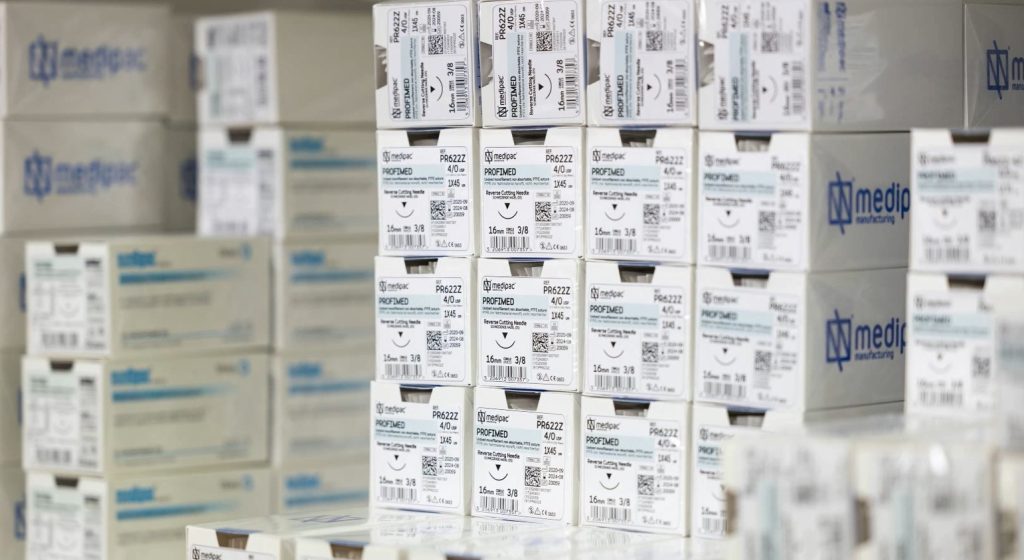
Key factors to consider include the suture’s strength, knot security, and wicking properties (see below), if a follow-up appointment is necessary for removal, if an absorbable material can be used, and the duration of its effectiveness.
SUTURE FUNCTION
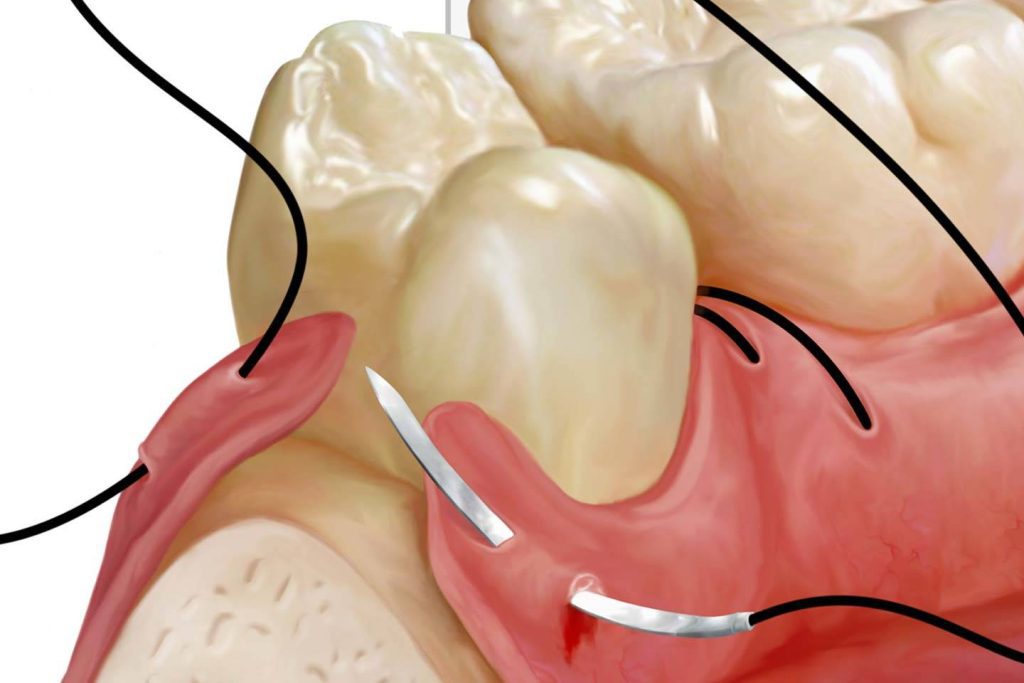
After a surgical procedure, clinicians must close the wound to prevent infection and promote healing.
Sutures hold the tissue in place and bring the opposing wound edges together. A sharper incision causes less trauma to the wound margins, which increases the likelihood of healing by primary intention, where the wound edges are cleanly aligned and close together, leading to faster and more efficient healing with minimal scarring.
If the space between the wound edges is minimal, complete wound healing will be possible. If the wound edges experience tears or significant trauma, healing may be slower as it will occur more by secondary intention. In secondary intention, the wound is left open and heals from the bottom up, with new tissue gradually filling the wound, often resulting in more scarring.
WICKING PROPERTIES
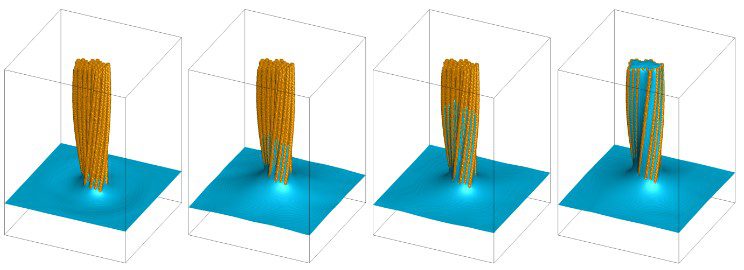
TENSILE STRENGTH
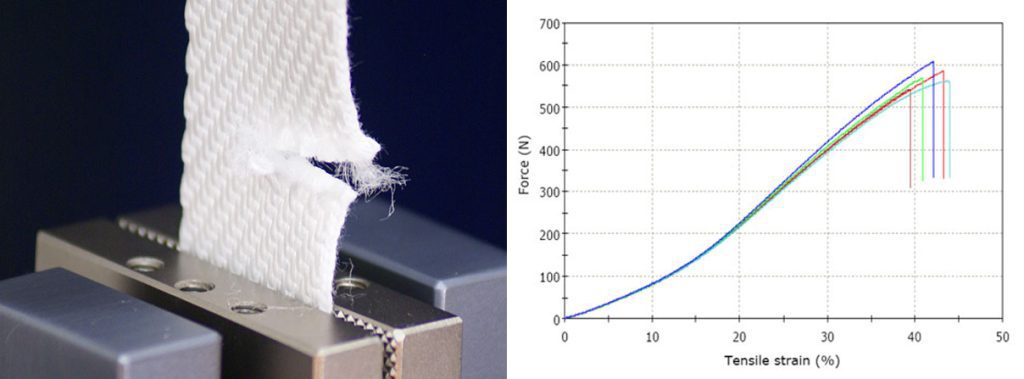
SUTURE SIZING
Today, the USA Pharmacopoeia (USP) uses a number and zeros separated by a hyphen, meaning 4-0 is 4 x 0, i.e. 0000, and 5-0 means 5 x 0, i.e. 00000.
The more zeros a suture has, the smaller its diameter. A 5-0 is smaller than a 4-0.
| Size in mm | Metric Gauge | USP Gauge |
| 0.05mm | 0.7 | 6-0 |
| 0.1mm | 1 | 5-0 |
| 0.15mm | 1.5 | 4-0 |
| 0.2mm | 2 | 3-0 |
SUTURE NEEDLES
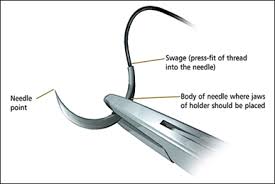
Suture needles are produced from surgical-grade stainless steel alloys and have three parts:
In oral surgery, the most commonly used needles are either half-circle or three-eighths circle (3/8). The curve of the needle allows it to pass through tight spaces and be guided smoothly with wrist rotation.
CUTTING NEEDLE
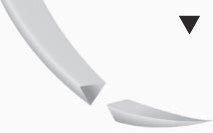
In oral surgery, the preferred choice is a reverse cutting (R/C) needle, which has the cutting edge on the outer curve. This design reduces the risk of the needle cutting through and damaging the tissue. A non-cutting needle is rarely used with abdominal surgery, one of the few disciplines where it is preferred.
SUTURE THREAD TYPES.
Oral suture threads can be monofilament (single) or multifilament (sometimes known as braided). It is important to appreciate the key features and weaknesses of each type.
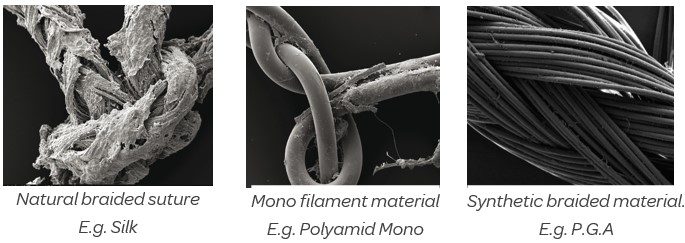
MONOFILAMENT SUTURES
Monofilament sutures ‘pull-through’ tissues well and are less absorbent (wick) than multi-filament. They are less pliable and may possess a memory that makes them want to keep the position inside their package.
Monofilament threads require 4 or 5 throws to create the knot versus 3 throws for multi-filament type. Some monofilament materials can have a sharper edge which patients can feel.
MULTIFILAMENT SUTURES
Multifilament or braided suture types have strands twisted together to make them stronger than monofilaments of the same material. They are supple and pliable.
Multifilament threads can generate more friction and drag when passing through tissues compared to monofilament. In addition, the spaces between the filaments can soak up fluid and host bacteria.

SUTURE MATERIALS
Natural gut sutures have been superseded by synthetic materials of both nonadsorbing and fully adsorbing types. Today, most oral surgery procedures are completed with a synthetic suture material in either monofilament or multifilament, with the characteristics attributable to the filament type chosen – better healing and less bacterial harbouring against packaging memory, more knot throes and sharpness/stiffness.
NON-ADSORBING SUTURES
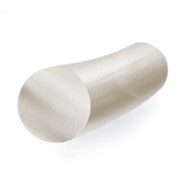
Polytetrafluoroethylene or PTFE for short is an un-coated monofilament suture recognised as the most ideal for bone graft and dental implant procedures.
PTFE monofilament Dental Sutures are available in 3-0, 4-0, 5-0 and 6-0 sizes and present the following key features:
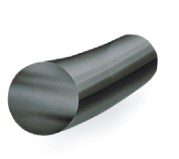
Polyamid is a monofilament nylon-type suture made from a copolymer of Polyamid 6 and available in 3-0, 4-0,5-0 and 6-0 sizes.
Polyamid Dental Sutures are often chosen for their premium features at significant cost savings compared to PTFE albeit with a slight increase in memory effect.
ADSORBING SUTURES
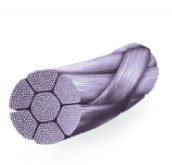
Polyglactin 910, often known as Vicryl or Neosorb is an absorbable multifilament suture that looks and feels like fine cotton and is dyed purple to make it easier to see.
Polyglactin 910 sutures are often coated to improve tissue pull-through and reduce wicking. Polyglactin 910 is available in 3-0, 4-0, 5-0 and 6-0 sizes.
Adsorption: Polyglactin 910 loses 50% tensile strength at 21 and is 100% adsorbed by day 70.

Polyglactin Rapid (Vicryl Rapid / Neosorb Rapid) is a polyglactin 910 multifilament with a low molecular weight coating for quicker adsorption than standard polyglactin 910.
A coated Polyglactin Rapid suture offers good pull-through and low tissue reaction with good knot hold and is available in 3-0, 4-0, 5-0 and 6-0 sizes.
Polyglactin Rapid adsorption: Demonstrates 50% loss at day 5 and 100% at 10 days.

Poly Glycolic Acid or P.G.A. is a multifilament alternative to Polyglactin 910 with a slightly longer adsorption time and lower packaging memory.
P.G.A. demonstrates excellent handling and good tensile strength. PGA is available in 3-0, 4-0, 5-0 and 6-0 sizes.
P.G.A adsorption: P.G.A. retains 65% tensile strength at day 14 and more than 35% at day 70.
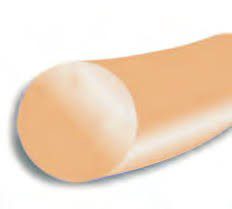
P.G.C.L (Monofast, Monocryl) is one of the only absorbable monofilament materials available.
P.G.C.L is a copolymer of PGA and caprolactone with a high initial tensile strength.
As an adsorbing monofilament suture P.G.C.L ‘pulls-through’ tissues well and is less likely to absorb fluids than adsorbing multifilament types. It may present a memory effect from the package and a stiffer knot to the patient.
PGCL Adsorption: Retains good strength for 7 days, loses 30% at 14 and is complete at 100.
Summary
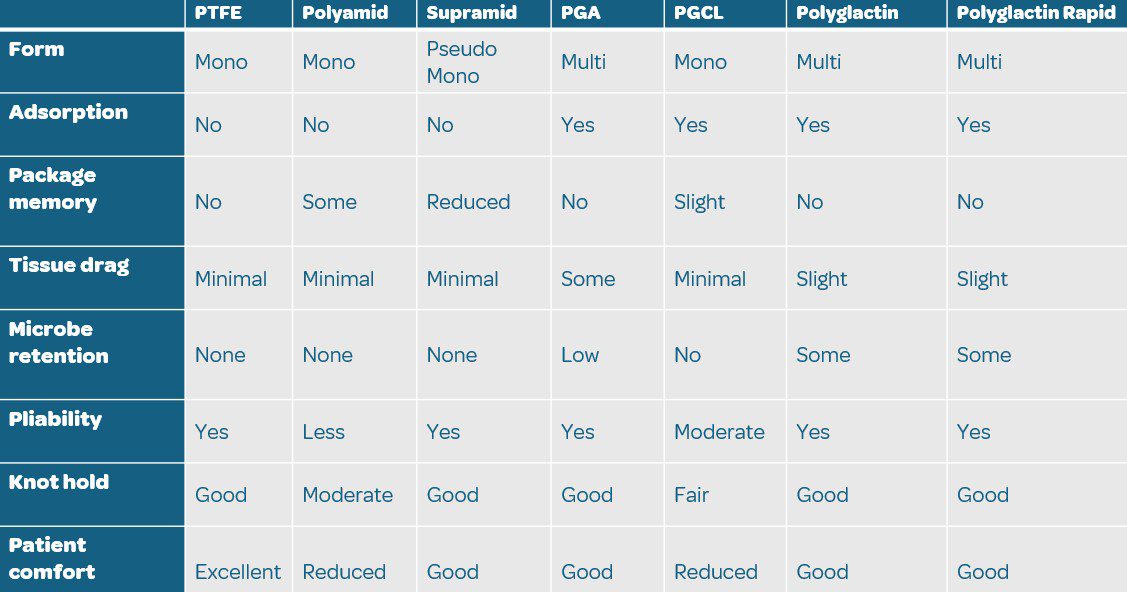
SUTURING TECHNIQUES
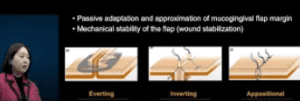
Online lectures covering the techniques to undertake a suture procedure can be found at https://www.youtube.com/@restore-surgical.
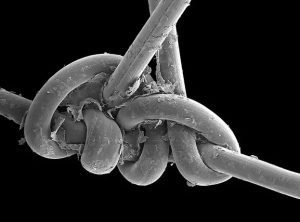
A short video tutorial on tools and knots can be seen at https://youtu.be/jVVzY524tSw
MORE INFORMATION, SAMPLES AND PURCHASING
Products featured in this article are manufactured in Europe by Medipac SA and available from Restore Surgical Limited. You can rread more about each SUTURE and browse the best deals HERE
To test a suture, write to ask@implant-store.co.uk letting us know your regular type and gauge.
TRADE NAME DISCLAIMER: Prolene, Dacron, GoreTex, Cytoplast, Teflon, Dexon, Vicryl, Vicryl Rapide and Monofast are registered trademarks and unconnected with Restore Surgical Limited.